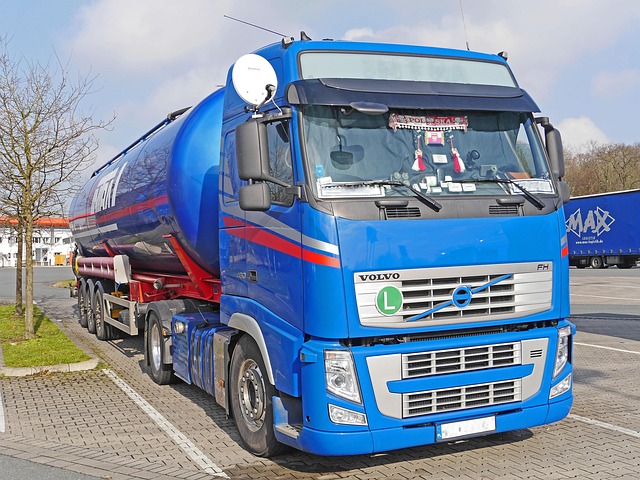Looking to register your car in California? This comprehensive guide walks you through the process step-by-step. From understanding key requirements to gathering essential documents, including the crucial role of a VIN verifier for verifying vehicle history, this article has you covered. We’ll also detail whether you prefer the online or in-person registration process, and how to pay fees and obtain your plates.
- Understand California Vehicle Registration Requirements
- Gather Necessary Documents for Car Registration
- Use VIN Verifier to Ensure Validity of Vehicle History
- Complete Online or In-Person Registration Process
- Pay Registration Fees and Receive Your Plate
Understand California Vehicle Registration Requirements

Before registering your car in California, it’s crucial to understand the state’s specific requirements for vehicle registration. One key aspect is ensuring that the Vehicle Identification Number (VIN) is accurately verified. The California Department of Motor Vehicles (DMV) mandates a thorough VIN inspection as part of the registration process. This verification step helps maintain the integrity of the state’s vehicle records and ensures that all cars on California roads meet safety standards.
A valid VIN inspection can be conducted through various methods, including traditional in-person visits to DMV offices or more convenient options like mobile VIN verification and mobile VIN inspections. These modern alternatives allow you to complete the necessary paperwork and get your car registered from the comfort of your own home or location of choice. By utilizing these efficient services, you simplify the registration process and save valuable time.
Gather Necessary Documents for Car Registration

Before you begin the registration process, ensure you have all the required documents ready. This includes your vehicle’s registration certificate from the previous state, a valid driver’s license, proof of insurance, and perhaps the most crucial document—the Vehicle Identification Number (VIN) verifier. The VIN is a unique code that identifies your car, and it’s essential for any registration or title transfer.
For a seamless process, consider using mobile vin verification services, which allow you to obtain this information quickly. These services provide a convenient way to confirm the vehicle’s details, ensuring accuracy during registration. With just a few clicks, you can access vital data that will expedite your car registration in California.
Use VIN Verifier to Ensure Validity of Vehicle History

Before registering your car in California, it’s crucial to verify the vehicle’s history to ensure its authenticity and avoid any potential issues. One effective method is to use a VIN (Vehicle Identification Number) Verifier. This tool allows you to cross-reference the provided VIN with various databases to uncover any hidden problems or discrepancies associated with the vehicle.
A VIN Verifier can help in conducting a mobile vin inspection or checking the history remotely, making it a convenient step in the registration process. By ensuring the validity of the vehicle’s past and identifying any red flags early on, you can make informed decisions and protect yourself from potential fraud or hidden damage.
Complete Online or In-Person Registration Process

In California, registering a car involves either completing the process online or in-person at a Department of Motor Vehicles (DMV) office. Both methods begin with gathering essential documents, including your vehicle’s Vehicle Identification Number (VIN) verifier, proof of ownership, and current registration (if transferring from another state). Online registration is convenient, allowing you to submit forms digitally, while in-person registration offers the advantage of immediate feedback and faster processing times.
Regardless of your chosen method, a crucial step is conducting a VIN inspection. This ensures that the vehicle matches the provided VIN and helps prevent fraud. For added convenience, many services now offer mobile VIN verification, allowing you to complete this step from the comfort of your home or office. Once all documents are in order, whether online or at the DMV, you’ll pay the registration fee and receive your new California vehicle registration plates.
Pay Registration Fees and Receive Your Plate

After completing your vehicle’s registration application, the next step is to pay the required fees. These include the registration fee and a vehicle identification number (VIN) verification charge. The California Department of Motor Vehicles (DMV) will process your application and issue a registration certificate once these fees are paid. You can typically pay online or at a local DMV office using a debit or credit card.
Once your payment is processed, the DMV will schedule a plate placement appointment if you haven’t already chosen custom plates. During this appointment, they’ll assign standard license plates to your vehicle. Alternatively, you can opt for mobile VIN verification services that allow a trained professional to inspect and validate your vehicle’s VIN using specialized tools, ensuring accuracy and saving you a trip to the DMV.
Registering a car in California is a straightforward process that requires understanding specific requirements and gathering essential documents. By utilizing a VIN verifier to check a vehicle’s history, you ensure a legitimate transaction. Whether completing the registration online or in-person, paying the necessary fees, and receiving your plates, this guide provides a smooth and efficient path for California residents to legally register their vehicles.



